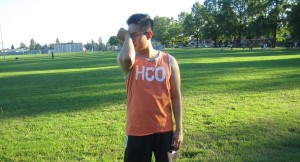
Lazy eye is a childhood condition wherein there is a loss of ability to see details in one eye.This condition typically affects only one eye but may also affect both eyes in relatively rare cases. It is one of the leading causes of partial or total blindness in one eye in infants and children. If it is left untreated, vision loss may increase from slight to severe. Treatment will depend on the severity of the lazy eye.Lazy eye is also known as amblyopia.
The problem with lazy eye does not originate from the eye but from the brain. The decreased vision occurs from abnormal development of vision wherein the brain favours one eye over the other. The nerve pathway from a particular eye to the brain does not develop or is not stimulated properly, resulting to blurred or even wrong images to the brain.Ultimately, the brain may completely ignore signals received from the “lazy eye.” The weaker eye tends to wander giving it a lazy appearance.
Causes of Lazy Eye
Lazy eye usually develops from refractive errors in one eye and other eye conditions. The following may affect the quality of signals sent to the brain and eventually lead to the misalignment of the eyes:
- Refractive errors
- Near-sightedness (myopia)
- Far-sightedness (hyperopia)
- Astigmatism
- Strabismus (most common cause)
- Squint
- Corneal ulcer
- Congenital cataract
- Glaucoma
- Ptosis (droopy eyes)
- Eye tumour
Signs and Symptoms of Lazy Eye
An individual with a lazy eye will not be able to properly focus one of their eyes. It is possible that there is not obvious abnormality with lazy eye and other symptoms may not always be obvious. The most common signs and symptoms of lazy eye include:
- Double vision
- Blurred vision
- Eyes that turn in or out and do not work together
- Poor vision in one eye
- Poor depth perception
- Unusually clumsy at their age, such as tripping a lot or running into objects
- Problems catching objects
- Poor sports performance
Treatment for Lazy Eye
A diagnosis is necessary for proper treatment to be given. Usually, treatment for lazy requires forcing the brain to make more use of the lazy eye. The following methods are known to help a lazy eye.
- For refractive errors, corrective eyewear is usually prescribed by means of eyeglasses or contact lenses.
- In some cases, it is necessary to cover the good eye with an eye patch to stimulate the weaker eye. This should be done diligently and may be required to be done for three to six hours in a day.
- Eye drops may serve as an alternative for eye patch which can also encourage the brain to use the weaker eye.
- In severe cases, surgery may be required.
As in with most medical problems, chances for complete recovery increases with earlier detection. It is strongly recommended for parents, guardians and nannies to enrol in Standard Childcare First Aid with workplace approved Training for keener observation skills in cases medical conditions or emergencies may arise.
